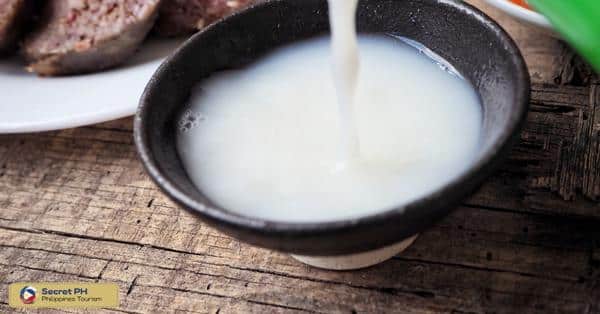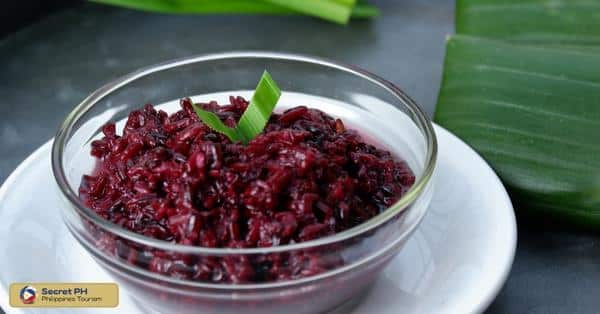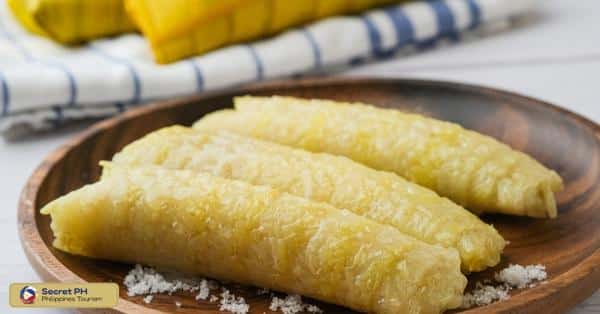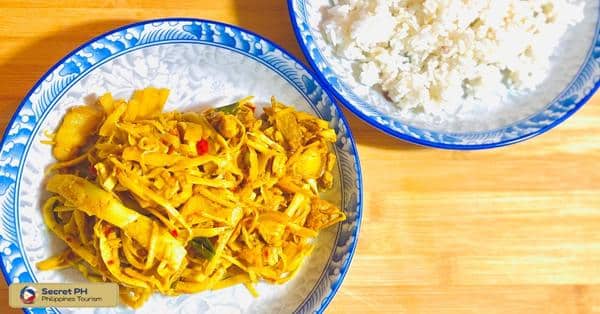Savor Mountain Province’s culinary heritage with these 10 must-try dishes, from the smoky Etag to the unique Pinikpikan. Experience the essence of the region through Tapey, a traditional rice wine, and the sweet delight of Binaud. These dishes showcase the rich culture and flavors of the mountains in every bite, making your visit truly memorable.
In this blog, we will take you on a gastronomic adventure as we explore the top 10 must-try dishes in Mountain Province. Get ready to tantalize your taste buds with unique and delicious flavors that will leave you wanting more.

1. Etag
Etag is a traditional smoked meat dish made with pork, which is cured with salt and then smoked over a wood fire for several days. Etag is typically smoked using the wood of the alnus tree, which gives the meat a unique flavor.
Etag is a popular dish in the Mountain Province and other parts of the Cordillera region of the Philippines. It can be eaten on its own, but it is often used in a variety of dishes, such as stews, soups, and stir-fries. Etag is a good source of protein and iron, and it is also a good source of vitamins and minerals.

2. Pinikpikan
Pinikpikan is a traditional dish made with a live chicken that is beaten to death with a stick before being cooked. The beating is said to tenderize the meat and give it a unique flavor.
To make pinakpikan, the chicken is first hung by its feet and beaten with a stick until it is dead. The chicken is then plucked, cleaned, and cut into pieces. The chicken pieces are then cooked in a variety of ways, such as grilling, boiling, or frying.
Pinikpikan is a popular dish in the Mountain Province and other parts of the Cordillera region of the Philippines. It is often served at special occasions, such as weddings, festivals, and gatherings. Pinikpikan is also a symbol of the region’s rich culture and heritage.

3. Pinuneg
Pinuneg is a traditional blood sausage made with pig’s blood, minced pork fat, salt, red onions, ginger, and garlic, which are then stuffed into a casing made from pig’s small intestine. Pinuneg is typically prepared during pig sacrifice ceremonies.
To make pinuneg, the pig’s blood is first collected and cleaned. The minced pork fat, salt, red onions, ginger, and garlic are then added to the blood and mixed well. The mixture is then stuffed into the pig’s small intestine and tied off at both ends.
Pinuneg is typically cooked by grilling or boiling. It can also be eaten raw. Pinuneg is a delicious and hearty dish that is perfect for a cold day. It is also a good source of protein and iron.

4. Tapey
Tapey is a traditional rice wine made by fermenting cooked rice with a type of wild yeast called tapuy. Tapey is typically fermented for several weeks or even months, and it has a sweet, slightly sour flavor.
Tapey is a popular drink in the Mountain Province and other parts of the Cordillera region of the Philippines. It is often served at special occasions, such as weddings, festivals, and gatherings. Tapey is also used in a variety of dishes in the Mountain Province, such as tengba (fermented rice paste) and binatog (boiled glutinous rice with coconut milk).

5. Tengba
Tengba is a fermented rice paste that is a popular condiment made by fermenting cooked rice with a type of wild yeast called tapuy. Tengba is typically fermented for several weeks or even months, and it has a strong, pungent flavor.
Tengba is used in a variety of dishes in the Mountain Province. It is often added to stews, soups, and stir-fries. It can also be used as a dipping sauce for meats and vegetables. Tengba is a good source of protein and probiotics, and it is said to have a number of health benefits, such as boosting the immune system and improving digestion.

6. Duom
Doum is a traditional Filipino snack with a unique preparation process that showcases the essence of simplicity and local flavors. Its sole component consists of immature rice heads that have yet to be harvested, where young grains are carefully separated from their stems and subjected to a quick frying process over a pan or vat, known as a silyasi.
The burnt husks are meticulously removed by pounding the grains in a stone mortar and wooden pestle, resulting in a distinctive texture. Using a winnower, the grains are skillfully separated from the husks and flattened, preparing the snack for consumption. To enhance the flavor, a touch of sugar is often added, offering a delightful balance of sweetness to this rustic and time-honored Filipino treat.

7. Binungor
Binungor is a stir-fried dish of black snails, bamboo shoots, and bird chili. The black snails are typically cooked in a mixture of coconut milk, ginger, and garlic before being added to the bamboo shoots and bird chili. The dish is served with rice.
Binungor is a delicious and hearty dish that is perfect for a cold day. The black snails are a good source of protein and iron, and the bamboo shoots are a good source of fiber. The bird chili adds a bit of heat to the dish, which is balanced out by the sweetness of the coconut milk.

8. Sabeng
Sabeng is a thick glutinous soup from boiled root crops (sengkamas, ube, and sweet potato or camote), pork, and native vegetables. It is a popular dish in the Mountain Province and other parts of the Cordillera region of the Philippines.
Sabeng is typically made by first boiling the root crops and pork until tender. The native vegetables are then added and cooked until they are wilted. The soup is then thickened with glutinous rice flour and seasoned with salt and pepper to taste. Sabeng is a delicious and hearty soup that is perfect for a cold day. It is also a good source of carbohydrates, protein, and fiber.

9. Sigtim
Sigtim, also known as sinigang nga sigtim, is a sour soup made with a type of edible fern called sigtim, pork, and other local ingredients. Sigtim is typically made by first boiling the sigtim fern in water. The pork is then added and cooked until tender.
Other ingredients, such as chopped tomatoes, onions, and garlic, are then added to the soup. The soup is then seasoned with salt and pepper to taste. Sigtim is a delicious and sour soup that is perfect for a hot day. It is also a good source of fiber and other nutrients.

10. Binaud
Binaud is a traditional meat bun made with ground pork, onions, garlic, ginger, and spices, which are then wrapped in a thin layer of dough and steamed. Binaud is typically served with a dipping sauce made from vinegar, soy sauce, and chili peppers.
Binaud is a popular dish in the Mountain Province because it is relatively easy to make and can be eaten for breakfast, lunch, or dinner. It is also a good source of protein and carbohydrates.

In conclusion
Mountain Province offers a diverse and unique gastronomic experience that reflects its rich cultural heritage and deep connection to the land. From traditional preservation techniques like Etag and Pinuneg to dishes that celebrate the abundance of local ingredients such as Duom and Binungor.
Each dish tells a story of the community, traditions, and history of Mountain Province. Whether you’re a food enthusiast looking to explore new flavors or simply seeking a taste of authentic Filipino cuisine, the dishes of Mountain Province are sure to leave your taste buds satisfied and your heart full.








